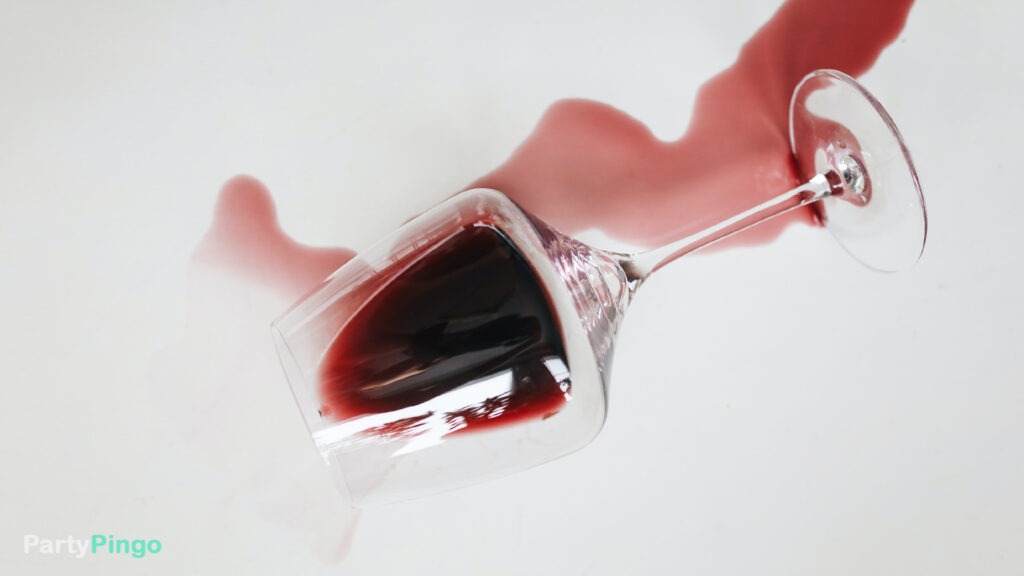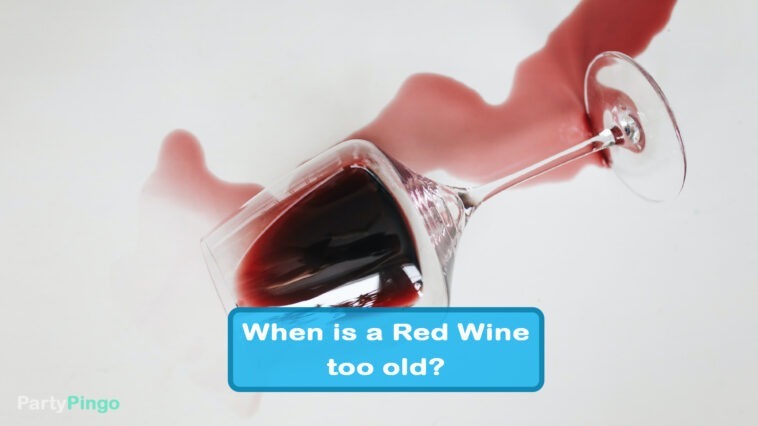How long can red wine last?
You know it for sure – it’s excellent with a good glass of red wine for dinner on a regular Tuesday, but before you put the corkscrew in, you might think about it one more time. For how long does the red wine stay fresh after being opened? It is a great shame to let good wines go to waste. But based on this principle, it can also give a slight headache the next day at work if you even force yourself and the guests to empty the bottle.
Another more complicated issue that wine lovers should deal with is the shelf life of unopened red wine. There is, of course, a big difference between the good everyday wine and the cardboard wine, and then the excellent quality wines, which are created to be aged. But not forever!
Therefore, we bring an overview of the shelf life of the different wine types – opened and unopened.
But something that many are not aware of is that when you receive a bottled red wine, it has usually been in a wine barrel for between 1 and 2 years before it comes in a bottle.
These wine barrels have also become popular in several households for their aesthetic appearance and are ideal for a minibar or similar and are not as expensive as they used to be; at Amazon, you can see a small selection of wine barrels. See the selection of wine barrels here.
How long can an open bottle of red wine last?
Like other organic foods, red wine is “alive,” and the wine is constantly evolving – both with and without cork. Once the stopper is gone, completely new factors begin to play into the chemistry of the red wine – namely the oxidation, or oxidation, which triggers the degradation. Conversely, the oxygenation makes the wine unfold and open to its unique flavors and aromas.
Of course, this happens faster in the wine glass than in the bottle, but after the cork is off, if only for a short moment, the oxygen percentage in the bottle changes completely. The temperature in, for example, the living room or on a summer-warm terrace also helps the oxidation and thus the decomposition of the wine to take place even faster.

Therefore, put the stopper in the red wine as soon as no more pouring is required, and put the bottle in the refrigerator. Then you improve the shelf life, and usually, you will be able to enjoy the wine for the next 2-3 days. Keep in mind, however, that the temperature of the red wine when it is to be served should be around 15-17 degrees – so if you want to enjoy the wine on the second or third day of its opening, take it out of the fridge some time before serving. The many temperature changes for the wine in the bottle can, in many cases, make the decomposition faster. For example, suppose you want to enjoy the open red wine over several days. In that case, Therefore, it is to only pour it into glasses, where the wine can then be heated, after which the bottle is immediately put back in the fridge.
The age and type of red wine determine shelf life after opening. The older the wine, the worse its oxidation resistance, and it may only last one day. This also applies even if it is put in the fridge with a plug immediately after opening. Therefore, enjoy the great wines when there is really an opportunity to drink the whole bottle – and instead find a solid everyday wine that can deliver glass to the Tuesday steak.
Now that we’ve got into everyday wine, cardboard wine or “bag-in-a-box” has become increasingly popular with Danes – almost 40% of all wine purchases are now wine in 0.8 or 1.4-gallon boxes! However, the unflattering designation is partly unfair, as reputable red wines are now also offered in cans. In general, however, more sulfur is added to increase shelf life, making the taste significantly more complicated if you do not remember to decant the wine 1-2 hours before serving. Also, check the expiration date printed on the box – cardboard wine should never be stored due to the plastic packaging.
There is a discussion about how long a red wine in a box can last after opening, as in connection with the pouring from the tap, larger or smaller amounts of oxygen can escape into the bag. After opening, the shelf life of cardboard wine can therefore be from a few weeks up to a month. The only safe method is to taste and put the box in the fridge after opening it!
When is the red wine too old after opening?
It entirely depends on the type of wine, the amount of tannins (tannic acid), and so on, and how long a shelf life a red wine has after opening. Red wine with high acidity can last a little longer. The more that is drunk from the bottle, the higher the oxygen level, so there will be a greater risk of storing smaller amounts of wine over several days. An overdone wine smells and tastes like really bad sherry, and you will most likely no doubt that there is something wrong with the wine.
It should be emphasized here that you do not get sick from drinking wine that is slightly oxidized and which is slowly getting worse – but of course, it should not be “enjoyed” in larger quantities! Conversely, prolonged oxygenation (a day or two) can, in some cases, actually elevate the spectrum of aromas and open up the character of the wine, so taste it and be curious. However, it will usually only be an option for young red wines.
Whether you can freeze wine leftovers? Yes, but only for cooking! First, reduce the water content of the red wine by boiling it and pouring it into freezer packaging. Frozen wine can last up to a year – and then you always have good wine for the sauce at hand.
You can always find the signs of oxidation by looking at the more brownish color. If the red wine is decomposed and dead, it tastes of vinegar – and then it’s out immediately!

What is the shelf life of unopened red wine?
As we have mentioned before, you have to find out quite in-depth about the individual wine if you want an exact “expiration date”; the potential for storage depends on several unique factors such as the content of fruit acid, tannin, and natural antioxidants, and not least whether sulfur has been added. The sulfur content can be minimized if the red wine has a high amount of tannin. Only a low dose of sulfur is added to organic wines, which is worth writing behind the ear if you intend to invest in larger batches.
As a starting point, everyday red wines, i.e., red wines that are not of more delicate vintages or refined types of wine, are not suitable for long-term storage. These red wines must be consumed relatively quickly and thus have a shelf life of up to 5 years, regardless of whether they have a cork or a screw cap. However, it is often recommended that they be drunk within 2-3 years, so always remember to have a thorough overview of your wine rack if you have received wine gifts and the like.
The more significant-top red wines, on the other hand, are created for storage with their perfect balance of tannins and the other factors that extend the shelf life. These wines require somewhere between 4 and 8 years to be fully ripe, after which they stay on top for 4-6 years. After this, the quality of the red wine drops again over 3-5 years, to finally be well on its way to its “death.” Therefore, the excellent wines can generally be aged over ten years and the very best up to 20 years. When you find out about the age of the different wines, remember that a distinction is often made between the date of harvest and the date of bottling in the information about the individual red wine’s storage potential and shelf life.
If you buy French red wines for storage, it is recommended that you focus on Bordeaux red wines from Graves, Médoc, Pomerol, and Saint Émilion. Bordeaux wines are “high jumpers” when it comes to storage and shelf life, and certain types, especially those of the name Cru Classé, can therefore be stored for up to 25 years! By comparison, the famous young red wines from Beaujolais only need to be aged up to about three years before they are fully ripe. The relatively short aging time that many Rhône wines have usually also applies to many of the more famous Spanish wines, which, among other things, stem from a very similar wine climate.
On the other hand, if you aim for Italian wines with a slightly longer storage potential and shelf life, you should go for Barolo, Vino Nobile, and Brunello. Often, however, we are only talking about storage over a maximum of 10 years.
But how do you check if a bottle of red wine is too old without opening the bottle? All red wines are stored from sediment, and thus it is not something that should make your alarm bells ring. Instead, hold the red wine up to the light and check if it is cloudy. Spotty turbidity or an entirely “milked” wine are severe signs of unwanted fungal growth or bacterial infections. It is destructive to the wine and seriously harmful to health.
If you have a strong suspicion that the wine is spoiled, you must open the bottle in question to get sight of legends and possibly check through all the remaining bottles if you have invested in a larger batch of the same vintage. Drinking the wine can lead to life-threatening infections in the worst case, you have to stop selling and consuming until a clear answer is found.
Disclaimer:
Please remember to drink responsibly! This post is not intended to promote excessive or irresponsible drinking. PartyPingo does not condone underage drinking, drinking and driving, or any form of reckless alcohol consumption. Stay safe and know your limits.
If you enjoyed our content, please share it with others or give us some feedback and let us know how we can make it better!
This post contains affiliate links.


